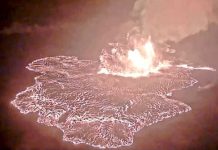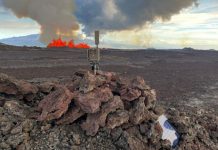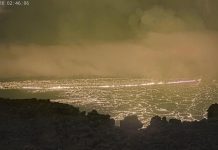
Sept. 24 (UPI) — The presence of tiny crystals in magma can cause volcanoes to violently explode, according to a new study published Thursday in the journal Science Advances.
“Exactly what causes the sudden and violent eruption of apparently peaceful volcanoes has always been a mystery in geology research,” lead researcher Danilo Di Genova said in a news release.
“Nanogeoscience research has now allowed us to find an explanation. Tiny crystal grains containing mostly iron, silicon, and aluminium are the first link in a chain of cause and effect that can end in catastrophe for people living in the vicinity of a volcano,” said Di Genova, a geophysicist at the University of Bayreuth in Germany.
Using a combination of spectroscopic and electron microscopic imaging techniques, researchers were able to identify nano-sized crystals called nanolites in the ashes of active volcanoes.
In the lab, scientists successfully demonstrated how these tiny crystals, ten thousand times thinner than a human hair, increase the viscosity of volcanic magma, preventing volcanic gasses from bubbling up, escaping and relieving pressure inside magma chambers.
For their experiments, researchers focused on magma with low levels of silicon oxide, the kind of magma that forms basalt when it cools. Low silica magma isn’t very viscous; it is typically thin and runny. When low silica magma erupts, it spreads quickly.
“Basaltic volcanoes generally provide a stark contrast to their high-silica cousins, showing relatively low explosivity even if they have a high volatile content,” researchers wrote in their paper.
But the latest research suggests the presence of nanolites can turn low silica magma quite viscous, making it difficult for rising gasses to pass through it. As a result, bubbling gasses accumulate, increasing pressure in a magma chamber until the volcano explodes.
“Constant light plumes of smoke above a volcanic cone need not necessarily be interpreted as a sign of an imminent dangerous eruption,” Di Genova said. “Conversely, however, the inactivity of apparently peaceful volcanoes can be deceptive.”
In followup studies, researchers plan to use both computer simulations and high-pressure facilities to model the geochemical processes that result in sudden explosive eruptions.





